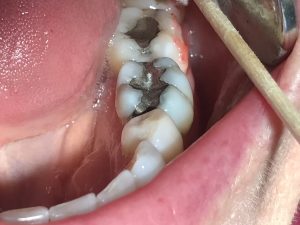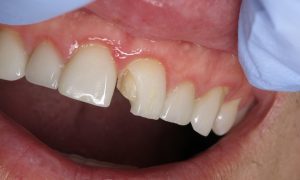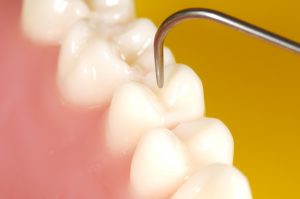Dental fillings are a common dental procedure that many people encounter at some point in their lives. While they may be ubiquitous, there’s more to fillings than meets the eye. In this comprehensive guide, we’ll delve into the world of dental fillings, exploring their purpose, the materials used, the process of getting a tooth filled, and the essential post-filling care. So, let’s embark on this journey to better understand the unsung heroes of dental restoration and how they contribute to maintaining our oral health, specifically focusing on filling on teeth, including composite filling.
Key Takeaways
- Dental fillings are essential for restoring teeth, preventing Decay and enhancing oral health.
- Different types of filling materials have advantages and disadvantages depending on the desired aesthetic or durability.
- Dental insurance coverage can affect out-of-pocket expenses when getting a filling. Understanding policies is key to calculating costs.
Understanding Dental Fillings
Dental restorations, such as dental fillings, play a vital role in our oral health by repairing or restoring teeth affected by decay, cracks, or wear. They restore the tooth’s shape and function while preventing further decay, ultimately enhancing our overall oral health. Fillings come in various materials, each with its own set of advantages and disadvantages.
The role of fillings in restoring teeth, their contribution to decay prevention, and overall enhancement of oral health will be examined in the upcoming sections.
The Role of Fillings in Restoring Teeth
- Fillings serve several functions in dental care, including:
- Replacing damaged areas of teeth
- Providing support to maintain the structure of the tooth
- Restoring teeth after decay or damage, including decayed or damaged teeth, whether it’s a small cavity or a large crack
- Rebuilding the tooth’s structure and bringing it back to its original shape and function
Fillings make use of materials that are robust enough to sustain biting and chewing pressures, thus contributing to the long-term strength and health of our teeth.
Preventing Further Tooth Decay with Fillings
Another essential function of dental fillings is preventing further decay in decayed teeth. When a cavity forms in a tooth, bacteria can easily enter and cause further damage to the tooth’s structure. Fillings help seal off these spaces, denying bacteria access and halting the progression of decay.
Fillings cover vulnerable areas, reinforcing the tooth’s structure and promoting an improved oral environment.
Enhancing Oral Health Through Fillings
Dental fillings play a crucial role in enhancing our overall oral health. By maintaining the tooth structure and preventing further decay, fillings contribute to keeping our teeth strong and functional. With a variety of materials available, such as composite resin or silver amalgam, dental fillings can be tailored to the patient’s specific needs and preferences. Composite resin fillings, in particular, can be customized to match the natural appearance of teeth, making them a preferred choice for those seeking aesthetic benefits.
In short, dental fillings are a cornerstone in preserving oral health and ensuring we can enjoy our favorite foods without pain or discomfort.
Filling Materials: Options and Considerations

Various dental filling materials are available for dental fillings, each with its own set of advantages and disadvantages. Understanding the differences between these materials can help you make an informed decision about which type of filling is best suited for your specific needs. This section will explore the common filling materials such as composite resin, silver amalgam, and gold fillings, highlighting their unique benefits and drawbacks. Composite fillings typically last between 3-10 years and are known for their safety and biocompatibility.
Composite Resin Fillings
Composite resin fillings are a popular choice for those seeking a more natural-looking solution. These tooth-colored fillings blend seamlessly with the surrounding teeth, making them an aesthetically pleasing option as composite fillings match the color of natural teeth. Composite fillings bond to the original tooth structure, enhancing the structural integrity and longevity of decayed teeth. They are made from a mixture of plastic resin and powdered glass filler, providing good durability and resistance to fracture in small to mid-size fillings.
Nevertheless, it should be noted that the lifespan of composite resin fillings is typically shorter compared to other types of fillings.
Silver Amalgam Fillings
Silver amalgam fillings, also known as silver fillings, have been a staple in dentistry for many years. They are composed of a mixture of metals, including silver, and are known for their durability and cost-effectiveness. Silver amalgam fillings can be used to fill large cavities and are easy to place.
However, their metallic appearance makes them less aesthetically pleasing than composite resin fillings. Additionally, they can cause some discoloration of the teeth over time.
Gold Fillings and Other Alternatives
Gold fillings, also known as inlays or onlays, offer a unique set of benefits and drawbacks. These fillings are made from an alloy of gold, copper, and other metals, providing strength and durability with lifespans of up to 15-20 years. Gold fillings are also less likely to cause an allergic reaction compared to other materials. However, they are typically more expensive and may require more tooth structure to be removed to accommodate the filling.
Other filling material alternatives include porcelain, glass, and composite material, each with their own set of advantages and disadvantages.
The Process of Getting a Tooth Filled
The process of getting a tooth filled involves several steps, from preparation and numbing to decay removal and cavity cleaning, followed by the placement and restoration of the filling. Composite filling procedures are particularly beneficial as they involve quick bonding and can often be completed efficiently in a single visit, restoring the natural color and function of teeth.
This section will guide you through each step of the tooth filling process, clarifying the procedures during a dental appointment and helping you understand what to expect when getting a filling.
Preparation and Numbing
Before the tooth filling procedure begins, the dentist will prepare the tooth and numb the area to ensure your comfort. This is typically achieved by administering a local anesthetic to the gums surrounding the affected tooth.
Once the area is numb, the dentist can proceed with the decay removal and cavity cleaning process, providing a pain-free experience for the patient.
Decay Removal and Cavity Cleaning
After numbing the area, the dentist will remove the decayed parts of the tooth using a drill or other specialized instrument. This step is crucial to eliminate the damaged portions of the tooth and sanitize it before the filling is placed.
Following decay removal, the dentist will clean the cavity to ensure that all decay-causing bacteria have been removed, creating a clean and healthy environment for the filling to be placed.
Filling Placement and Restoration
With the decay removed and the cavity cleaned, the dentist will place the chosen filling material into the cavity. Depending on the type of filling material used, the dentist may apply it in layers and cure it with a special light or simply pack it into the cavity. Once the filling is in place, the dentist will shape and polish it to match the tooth’s natural contours and ensure a comfortable bite.
The end result is a restored tooth that looks and functions like its original self, ensuring that sound tooth structure remains intact.
Post-Filling Care and Sensitivity Management

Proper post-filling care and sensitivity management are essential for a smooth recovery and the success of your dental filling. This section will focus on:
How to manage sensitivity and discomfort post-filling
- The importance of maintaining good oral hygiene
- Instances when emergency dental treatment might be required
- Managing Sensitivity and Discomfort
It is not uncommon to experience some sensitivity and discomfort following a dental filling. To manage these symptoms, consider using recommended oral care products and practices, such as:
- Using a soft-bristled toothbrush
- Avoiding acidic and sugary foods
- Using a desensitizing toothpaste like Crest Pro-Health Sensitive Plus Enamel Shield Toothpaste.
Additionally, Oral-B Glide Floss for sensitive gums can provide a gentle flossing experience without irritating the area around the filling.
Maintaining Oral Hygiene After a Filling
Good oral hygiene is crucial in protecting not only the newly filled tooth but also the surrounding teeth. Be sure to brush and floss regularly and schedule regular dental check-ups to ensure that your filling is secure and that there is no further decay or infection.
Adopting healthy oral care habits can extend the lifespan of your filling and contribute to your overall oral health.
When to Seek Emergency Dental Treatment
If you experience persistent pain or complications after two weeks, it is important to consult your dentist and seek emergency dental treatment. Your dentist can evaluate the situation and determine if any additional treatments are necessary, such as using a different filling material, replacing the filling, or, in some cases, performing a root canal treatment if the filling is too deep.
Prompt action can help prevent further dental issues and ensure a successful recovery.
Potential Complications and Replacement of Fillings

Dental fillings may require replacement or repair due to complications or wear over time. This section will address potential complications from dental fillings, the lifespans of different filling materials, and the urgency of replacing worn or damaged fillings.
Recognizing Signs of Complications
Being aware of potential complications is essential for maintaining your oral health. Signs that may indicate a complication with your filling include:
- Sensitivity to pressure, air, sweet foods, or temperature
- Persistent throbbing toothache
- Heightened sensitivity to hot or cold drinks or food
- Loose or cracked filling causing sharp pain or discomfort when biting down
If you experience any of these symptoms, it is important to consult with your dentist to address the issue.
If you experience any of these symptoms, it is advisable to contact your dentist promptly for an evaluation and appropriate treatment.
The Lifespan of Different Filling Materials

Different filling materials have varying lifespans, which can affect when replacements may be needed. Composite fillings require more skill to place successfully and less drilling compared to other types of fillings. Composite resin fillings typically last 5-7 years, while silver amalgam fillings can last 10-15 years, and gold fillings can last 15-20 years. Factors such as the material used, the size of the filling, the position of the filling, and the patient’s oral hygiene practices can all influence the durability of filling materials.
Replacing Worn or Damaged Fillings
It is important to replace worn or damaged fillings promptly to avoid further dental issues. If you notice signs of deterioration on your fillings, such as fractures or eroded spots, consult your dentist for a replacement.
Seeking professional dental care is essential for ensuring the proper removal and replacement of the filling, as well as the prevention of potential complications.
Indirect Fillings and Temporary Solutions

In some cases, indirect fillings and temporary solutions may be necessary in dental care. These types of fillings serve specific purposes and are distinct from direct fillings. This portion will delve into the objectives and limitations of indirect fillings like inlays and onlays, along with temporary fillings.
Inlays and Onlays: What are They and When are They Used?
Inlays and onlays are lab-made fillings used in specific situations. They are custom restorations that offer increased durability compared to traditional fillings and can be crafted from tooth-colored composite resin, porcelain, or gold.
Inlays and onlays are typically employed in cases where a tooth has sustained substantial damage or decay that cannot be addressed with a traditional filling. By reinforcing and strengthening the tooth, inlays and onlays provide a long-lasting solution for dental restoration. Porcelain fillings, while aesthetically appealing as tooth-colored restorations, can be more brittle and costly compared to composite fillings.
The Purpose and Limitations of Temporary Fillings
Temporary fillings provide short-term solutions for dental issues while a permanent filling is being crafted. They are not as resilient as permanent fillings and are designed to provide relief from pain and discomfort only for a limited time.
Temporary fillings should be replaced with permanent ones as soon as possible to ensure the long-term health and functionality of the tooth.
Dental Insurance Coverage for Fillings

‘Dental insurance coverage for fillings can vary, affecting your out-of-pocket expenses. Some insurance policies may cover a portion of the cost, while others may not.
This section will tackle common dental insurance policies related to fillings, as well as how to figure out out-of-pocket expenses for various filling materials based on your insurance coverage.
Common Dental Insurance Policies for Fillings
Typical dental insurance policies for fillings generally cover a portion of the expense, usually around 80%. However, the exact coverage may differ depending on the insurance plan and the type of filling required. It is essential to review your insurance policy to understand what coverage is provided for dental fillings and to discuss any questions or concerns with your insurance provider.
Estimating Out-of-Pocket Expenses for Different Filling Materials
To estimate potential out-of-pocket costs for different filling materials, it is important to consider the cost range for each material and the coverage provided by your dental insurance. For example, amalgam fillings typically cost between $50 and $400, while composite fillings range from $200 to $472.
By understanding the costs associated with each material and the coverage your insurance provides, you can make a more informed decision about which filling material is best for your needs and budget.
Summary
In conclusion, dental fillings play a crucial role in maintaining our oral health by restoring damaged teeth and preventing further decay. With various filling materials available and a step-by-step process for getting a tooth filled, understanding the ins and outs of dental fillings can help you make informed decisions about your dental care. A dentist in Rockville MD can provide personalized advice and treatment options tailored to your needs. Remember to practice good oral hygiene, manage post-filling sensitivity, and consult your dentist promptly if you experience any complications. By staying informed and proactive about your dental health, you can ensure a lifetime of strong, healthy teeth.
Frequently Asked Questions
How long will a dental filling last?
Dental fillings made of metal or gold can last upwards of 20 years, while more modern materials such as porcelain usually last 10 years or less. On average, a filling should last for around 10-15 years with good care, but this timeframe may vary depending on the material and how well it is treated.
How painful is a tooth filling?
Getting a tooth filling usually does not hurt, as the area will be numbed with anesthesia or lidocaine before the procedure. Some sensitivity may be felt afterwards, but this should resolve after a few days. Most people report little to no discomfort during the filling procedure itself.
What are the disadvantages of tooth fillings?
Dental fillings can cause teeth discoloration, sensitivity, staining, and weakened teeth. They also have a limited lifespan and may need replacement over time due to wear or decay around the filling. Additionally, when getting fillings there is a risk of infection and damage, as they may pull away from the tooth and leave space for bacteria or even break or fall out.
Do teeth fillings heal?
A filling helps replace the damaged or decayed part of your tooth with a durable material and prevent further decay. This treatment usually heals quickly without any issues, though some sensitivity may be experienced when the anesthesia wears off. With proper care, your filling should function as expected.
What are the main types of dental fillings?
The main types of dental fillings are composite resin, silver amalgam, gold, and other alternatives.






